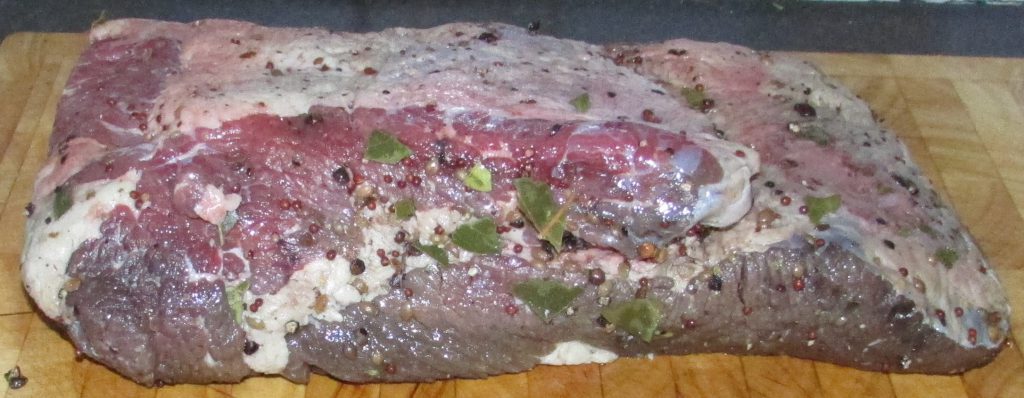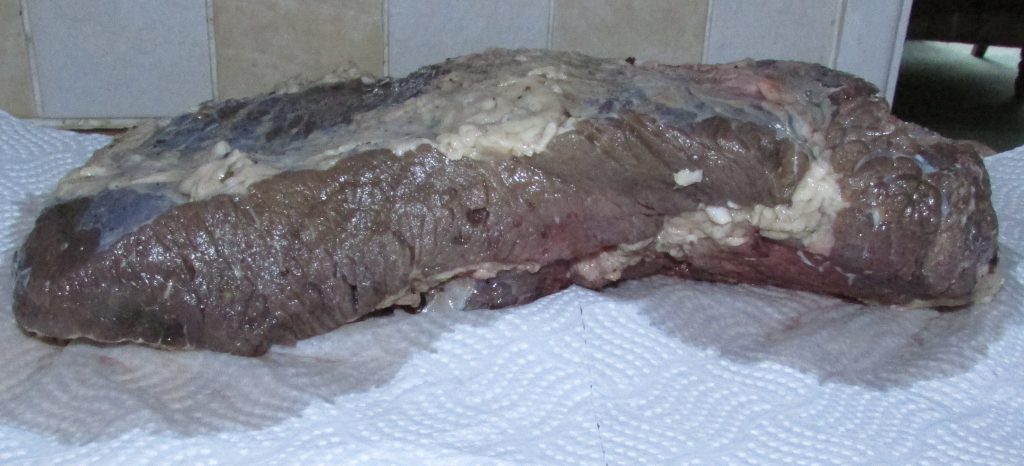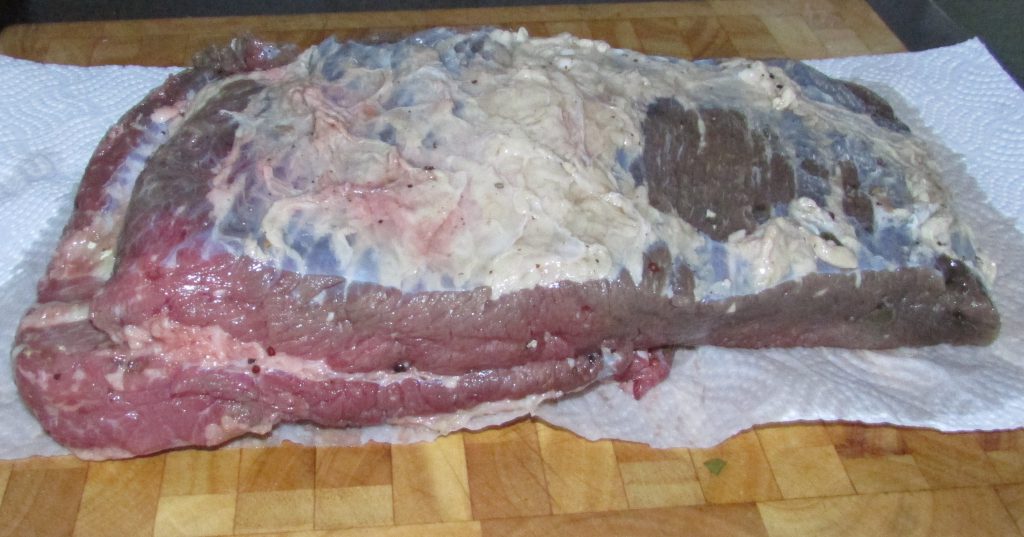The dry-cured beef that was put to cure on 29th August has now been curing for 20 days. How did I calculate the cure time? Well, it depends somewhat on the type of cure. Older cures tended to use lots of salt and then cure for a number of days per inch of meat. You still see people advising this online. However, that doesn’t apply in this case as the cure was formulated so that however long it’s left there can only be 2.5% salt in the meat. That’s about the same level as in mild bacon. I’ll braise the meat in liquid which will reduce this level further.
More important is that I chose to cure it for 20 days to give plenty of time for the saltpetre to work. Unlike the sodium nitrite in Cure #1, saltpetre (potassium nitrate) has to react with bacteria in the meat to lose an oxygen molecule and become potassium nitrite. It’s that nitrite that gives the meat protection and its colour.
We get a lot of questions about meat not looking as people think it will after curing so here’s a picture of the beef fresh from the cure:

You’ll note that some parts look red and others quite brown.
It’s even more noticeable after rinsing it. This is one side:

And, this is the other:

You can see that it looks very different. It’s nothing to worry about.
Another thing that worries people is weight loss or lack of it. This piece of meat weighed 1885gm after it was trimmed. The cure added to it weighed 83gm making a total of 1968gm. Now it’s cured, rinsed and dried it weighs 1918gm. That’s actually a 1.75% increase in the original weight of the meat.
The final episode, recipe and calculator are here.